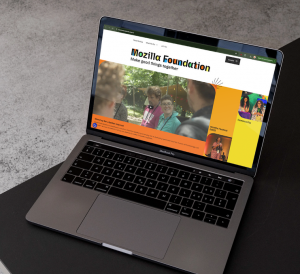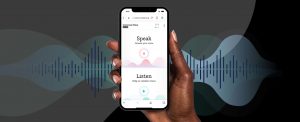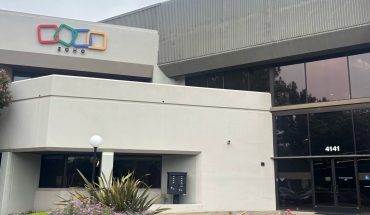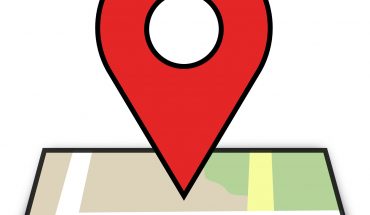Important initiatives at the global non-profit Mozilla Foundation include a new brand, a new website, new artificial intelligence (AI) projects and much more. They’re all fuelled by its on-going commitment to an open, inclusive, and accessible Internet – and the experience and energy of a new leader at the top.

Nabiha Syed, Executive Director at the Mozilla Foundation, appears in a recent video.
A year into her tenure as Executive Director at the Mozilla Foundation, Nabiha Syed has overseen much more than the creation of a new look and feel for the organization’s visual identity and online presence.
(Many folks think of the security-oriented Firefox web browser when they hear the Mozilla name; while associated, the Mozilla Foundation is a distinct organization advocating for open web standards and activities; the company that develops the popular browser, Firefox Corporation, is its for-profit subsidiary.)
Syed helped build the organization’s new Incubator, where early-stage tech builders with community service projects receive developmental support. She’s added more commitment and resources to the Foundation’s crowdsourced online linguistic resource, making multiple language datasets available to developers and communities worldwide, including here in Canada.
She’s reinvigorated Mozfest, the annual Mozilla Festival, with collaborative activities that gather people from around the world who are living this digital life and perhaps want a better one.
So the new brand visually emphasizes a distinct identity for the Foundation, a personality that’s separate from Mozilla Corporation.
“It’s less about distance and more about understanding,” she elaborated about the goals of the rebrand. “It’s to help the Foundation connect with communities and collaborators who believe in building a more human Internet. We have a really urgent task in front of us: to imagine what a good digital future looks like, not just for one product but for the entire ecosystem.”
That vision underscores the Foundation’s focus on ethical data practices, healthy digital environments, and the shifting of digital power among companies, communities, and individuals.
Despite the original promise of the Internet about freedom – freedom for people to connect, to learn, to create on their own terms – the industry has taken a turn away from freedom and towards a concentration of power, Syed says.
Tech today seems not as much about creativity or about connection, but about apps that follow us around the web, apps that collect, analyze and remember everything. Tech is fuelling larger agendas of power in ways that can intimidate many users.
Yet Syed says she and the Foundation “are defiantly optimistic that there actually can be a good future with technology. We believe in a healthy Internet where millions of people from around the world, not just Silicon Valley, are invested in building technology that works for them. It’s where you have control over your data, where you can learn about technology on your own terms, no matter where you happen to be.
“If you believe in tech that serves you, if you demand it, we want to show we will help you mobilize for a good tech future that puts humans first.”
That’s a lot to ask of a rebrand.

A new look for the Mozilla Foundation features a colourful, optimistic design that emphasizes a human connection to technology.
But the colourful, optimistic, humanistic new design manages to underscore that promise, if only through its use of ‘hand-drawn elements’ like squiggly lines across the screen and impromptu circles and arrows that highlight other visuals. The drawn-in-pencil look helps evoke that human touch.
“You’d think a tech company would lean into the pixels and tech of it all,” Syed says of the unique design elements. “But we want you to imagine what good looks like. Human joy is why we’re doin’ any of this; that’s what I thought the Internet was about, anyway.”
She’s been thinking about it for some time.
Prior to joining the Mozilla Foundation, she was the CEO at The Markup, the award-winning journalism non-profit covering technology and society. That role followed an acclaimed and highly visible period as lawyer involved in several high-profile media and technology matters, such as those involving Wikipedia, Buzzfeed, and Edward Snowden.
She’s received many awards, among them Crain’s New York Business 40 under 40 award, a Rising Star award from the Reporter’s Committee for Freedom of the Press, and the NAACP’s Digital Civil Rights Award.
The child of Pakistani immigrants, Nabiha speaks with fondness and commitment alike about another recent Foundation initiative, called Common Voices.
“It’s one of the things that first drew me to the Foundation, and it underscores why it’s so important to me: English is not my first language (her childhood home was filled with parental conversations in Urdu, Farsi, and Sindhi).
“I know as a result that there are different concepts and ideas available in other languages that aren’t available in English.”
So when talking about what is innovation, how to do something new, why wouldn’t we look to other sources? Why shouldn’t we listen to other voices?
The Foundation’s project, known as Common Voices, brings together a database of spoken language recordings and resources that the broader market may not see as useful (or profitable) in the short term.

The Foundation linguistic project, known as Common Voices, has been adopted here in Canada for Indigenous community uses.
Common Voices is a freely accessible, open-source data platform for language knowledge and preservation.
It takes a longer-term approach, one that is pro-innovation, pro-decentralization, and very much a part of the Mozilla open web vision.
Indigenous communities and languages preservation advocates here in Canada share the vision.
The National Research Council of Canada and the B.C.-based independent tech company Ursa Creative have adapted Mozilla’s Common Voice tool to help streamline recording of and data management for various Indigenous languages, aiming for a collaborative revitalization and resurgence of the languages’ social utility and cultural value in Canada and elsewhere.
“It’s an on-going project,” Syed noted of Common Voices, “and we’re investing more heavily in it than ever before. By pooling language resources, by making them widely available, we have another channel that’s open.”
Yet another open channel at Mozilla is, well, new and old at the same time.
This November will mark the return of the Mozilla Festival to the site of its first incarnation, Barcelona.
Now in its 15th year, the multi-day digital conference and community gathering took a back seat for a while, due to the pandemic and other causes.
But Mozfest is back, and Nabiha Syed says she hopes for “a return to the raucous chaotic vision” that lets thousands of attendees from all walks of life share in the discussion, design, and development of our digital life.
“We’re intentionally going back to the first city – what’s old is new again. The original festival spoke to the equality of all perspectives colliding in one place. That’s been our vision for some time, and it’s back this year. We have the theme of ‘Un-Learning’ which is a play on machine learning, but also a realization that what got us here won’t get us to the next space. We have to ‘unlearn’ our expectations of what is normal in the tech space.
“Do profit motives have to be extractive in order to scale? How do we talk about advertising in the digital era? We’re advertising to bots; people aren’t using open search, they’re using chat GPT. How do we think about innovation in its largest sense? It’s not just from Silicon Valley, so how do we get other perspectives, other cultures, into the mix?”
Good conversation is a great result of any gathering, but Syed says Mozfest should bring about “a kaleidoscope shift”, so the picture looks a little different after than before.
“I will feel the festival is a success if someone has a moment of pause before clicking, before downloading the next app, before following the normal patterns of digital behaviour. Just pause for a second. Think: ‘Do I want to use this in this way? Am I using it, or is it using me?’
“I want people to feel they are not the consumer of what happens online, they are the creator. They can curate their own experiences. It’s a mindset shift to not let Gmail answer my emails for me just because it’s prompting me to. That shift leads to tangible changes that are a full-frontal assault on what we are being sold every day: ‘Try this, it’s easier.’ ‘This’ll be faster for you.’
“What’s being pushed now is the opposite of the original engagement of the Internet. Back then you had to think about it. Now it’s just ‘Opt-in. It’s already been decided for you.’ If we can create resistance to that, that will open the space for real creativity to come.”
Born out of that moment can come a cascade of changes, she says.
There is space between stimuli and response, a space where freedom lies. That space is now the war zone, Syed says. “What we’re being fed closes that space. It’s dark patterns. It’s shorter attention spans. It’s our critical thinking up for grabs.”
It is a “yikes” framing, she acknowledges. “But that’s the urgent business at the Foundation. We’ll lose a lot of ground if we do not understand what is at risk, what is under assault.
“We’re not talking about being aggressive or warlike in that space, but we are talking about defiant optimism. That space is yours; you should own the next response.”
And ownership is another kind of branding.
-30-



